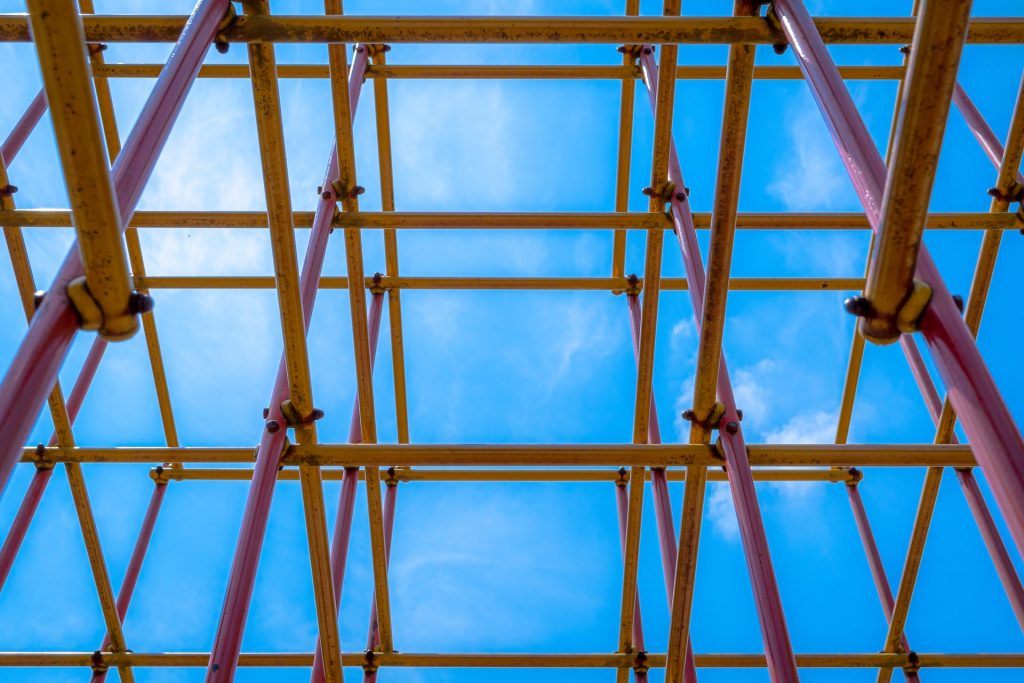How to keep children safe on climbing frames

The classic climbing frame has been a childhood favourite for more than a hundred years, coming to popularity in Germany in the 19th century. The term ‘jungle gym’ was invented in the US in 1920, but the climbing frames of today have come a long way from the configuration of metal bars they once were.
Climbing frames get the kids excited to learn and explore outdoors, which can only be a great thing. Climbing specifically is a great activity for kids’ development, too. But as adults, we are always concerned with safety as a priority. If you’re looking for tips on how to keep children safe on climbing frames, read on as we explore how to safely construct a climbing frame, how to maintain it, and overall, how to act on it.
How to Act: Climbing Frame Safety
One of the wonderful things about a climbing frame is that it gives children the opportunity to explore their boundaries and take controlled risks. The last thing we want to do is to curtail their movement, their exploration, and their confidence by limiting their behaviours.
So yes, this subtitle refers to how you should act!
Your first act as the responsible adult should be to only purchase a climbing frame that has undergone rigorous safety checks.
There are other important considerations you should immediately bring to bear each time the children you are responsible for use the climbing frame.
Adhere to the weight limit
You should make sure to adhere to the guidelines when it comes to weight limits. That means making a rough estimation of how many children the frame can hold safely, and ensuring that you don’t allow them to go over this capacity. Making sure to purchase a climbing frame with an adequate weight limit for the number of children you predict will use it is a crucial consideration before making that initial purchase, too.
Climbing frames are available to suit kids at many different developmental stages, so you must choose the right frame for the kids’ needs. A frame that is too large, or too small, for the kids intended to use it, will pose further safety risks.
Consider weather resistance before you purchase
Your choice of frame should be able to withstand the weather that will be thrown at it, including rain, snow, and wind in the UK! Weather-resistant materials are a really important choice for the frame, and consider the exposure to elements where it will be situated. A good quality frame will last for years without deterioration. Choose non-slip surfaces – steps, rungs, and platforms with non-slip treads, for example – but make sure that surfaces aren’t dangerously slippy before children use them anyway, through adequate maintenance (rain exposure can encourage mold growth, which makes for a slippy surface, and ice and snow have their own inherent risks).
Ensure you provide supervision
Climbing frames are great places for kids to test their limits – and occasionally seek to exceed them. Risky behaviours, for which the frame is not intended, could pose larger threats. A supervisor should be onhand to gently explain safe climbing techniques and how to use the frame as it was intended to be used.
How to Construct: How to Secure a Climbing Frame
Using the expertise of a professional is a great idea when it comes to the initial construction. They will know how to secure a climbing frame and be able to ensure that the ground anchors, a crucial safety feature, are securely fastened to the ground. These anchors are so important because they prevent the frame from tipping or moving when kids are playing on it – or in inclement weather conditions.
An expert will also ensure adequate safe space around the frame. To prevent accidents, it should be cited on a flat surface, away from obstacles such as walls and trees. A soft surface under the frame, such as grass, or rubber, is a good idea to cushion falls.
If the climbing frame is a commercial one, intended for a playground or public space, ensure that the landscaping firm you hire is reputable and that you have full confidence in their ability to install your frame into the ground safely. This is a really important point; practiced professionals will know how to incorporate safety features into the design, which someone who is doing this for the first time might not consider.
Providing a safe climbing frame relies upon several elements. Initially, ensure the frame you’re keen on adheres to safety standards. In the EU, that means complying with the European Standard for Play Equipment Safety (EN 1176). Make sure the frame has also been tested for safety by a reputable company.
When it comes to securing the frame itself, consider additional safety options, such as nets, padding, soft edges, and adequately enclosed platforms.
Safety nets are a great way to allow children to push themselves comfortably. Fitted to the underneath or sides of the frame, netting catches children if they fall but doesn’t curtail their enjoyment whilst climbing. Make sure the netting is of a high quality and check it regularly for deterioration.
Padding to bars and corners can also be something to consider, as can choosing a frame with rounded edges – pointed corners or sharp edges should be avoided when choosing your frame.
Having enclosed platforms prevents children from accidentally falling from the frame whilst playing. Openings between railings should be small enough to stop children from slipping through, too.
Also important to bear in mind is that any public climbing frame needs to be well maintained and looked after, to ensure its longevity and avoid a costly replacement too soon.
How to Maintain: Climbing Frame Maintenance
A good place to start is to buy a frame of sturdy construction, to begin with. Weather-resistant materials and a well-built frame are a great place to start when it comes to the longevity of your frame. A durable frame will last years and keep children safe throughout.
Ensuring it stays safe and functional with regular maintenance checks can save you a lot of money – and is vital for keeping children safe. Inspect the frame for signs of wear and tear, and tighten any screws and bolts. You should also check that the frame continues to be well anchored. Act on any concerns you stumble upon immediately.
Climbing frame safety is a top priority when choosing the right frame. We hope this article lays out the top considerations and highlights the necessary ongoing safety measures you should undertake so that your children can safely enjoy their climbing frame for many years to come.
